Regular readers will know that I can’t always think of a theme and, instead, produce a random collection of stories that may be of interest and today’s blog is one of those.
I’ll start with The Cottage at number 3 Hayne Street, just off Charterhouse Square …
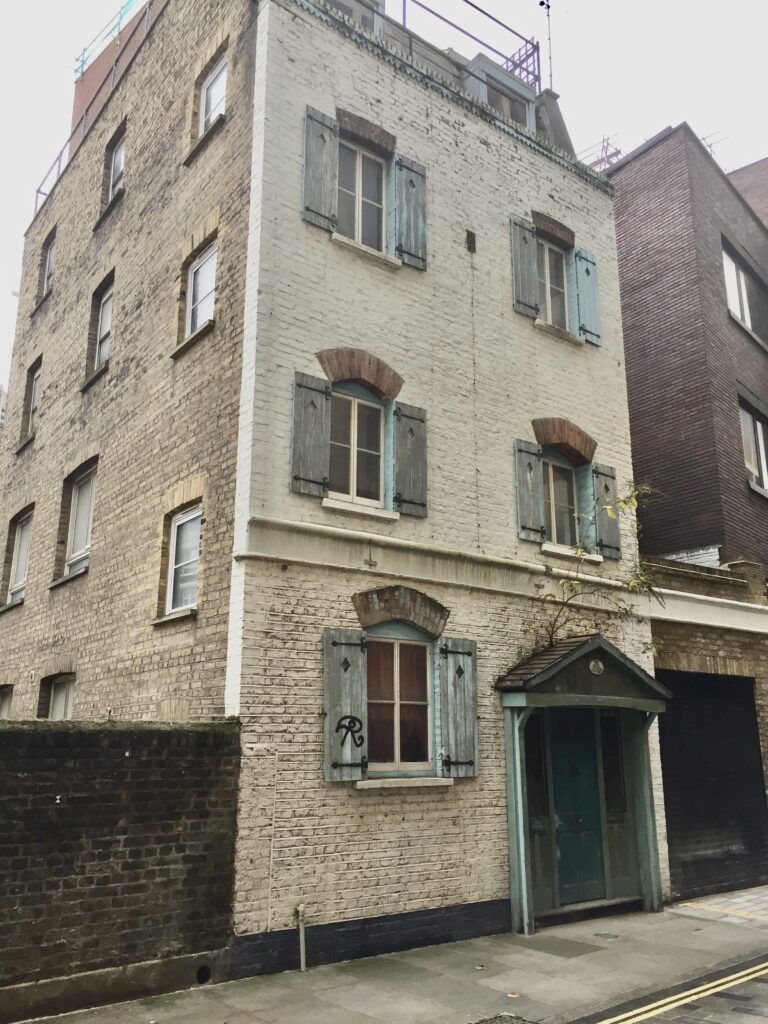
I am indebted to Katie Wignall, the Look up London blogger, for some background information.
The road was first called Charterhouse Street and laid out in 1687 but then along came the Metropolitan Railway and, as part of the work to extend the railway from Moorgate to Farringdon, Charterhouse Street was demolished. In 1873-74 Hayne Street replaced it (according to Pevsner, it’s named after the developer).
So now, teetering on the edge of the tracks and overlooking Barbican Underground Station, house number 3 is the final remnant of this 19th century thoroughfare …
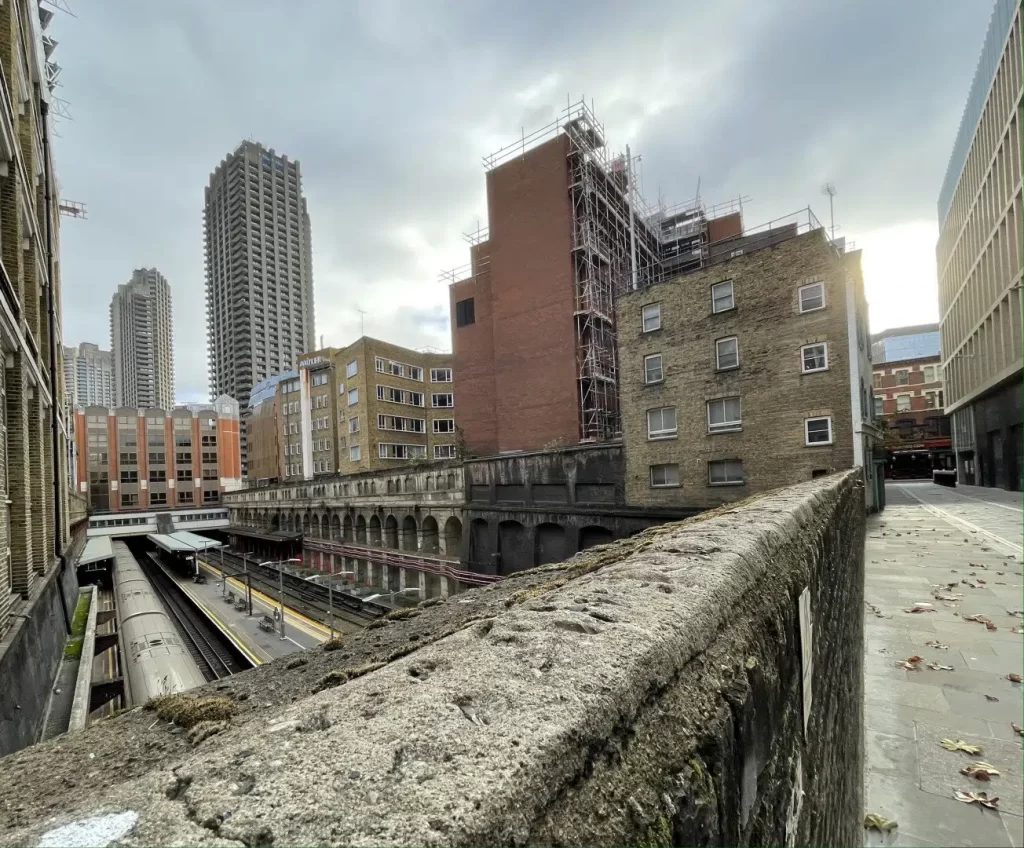
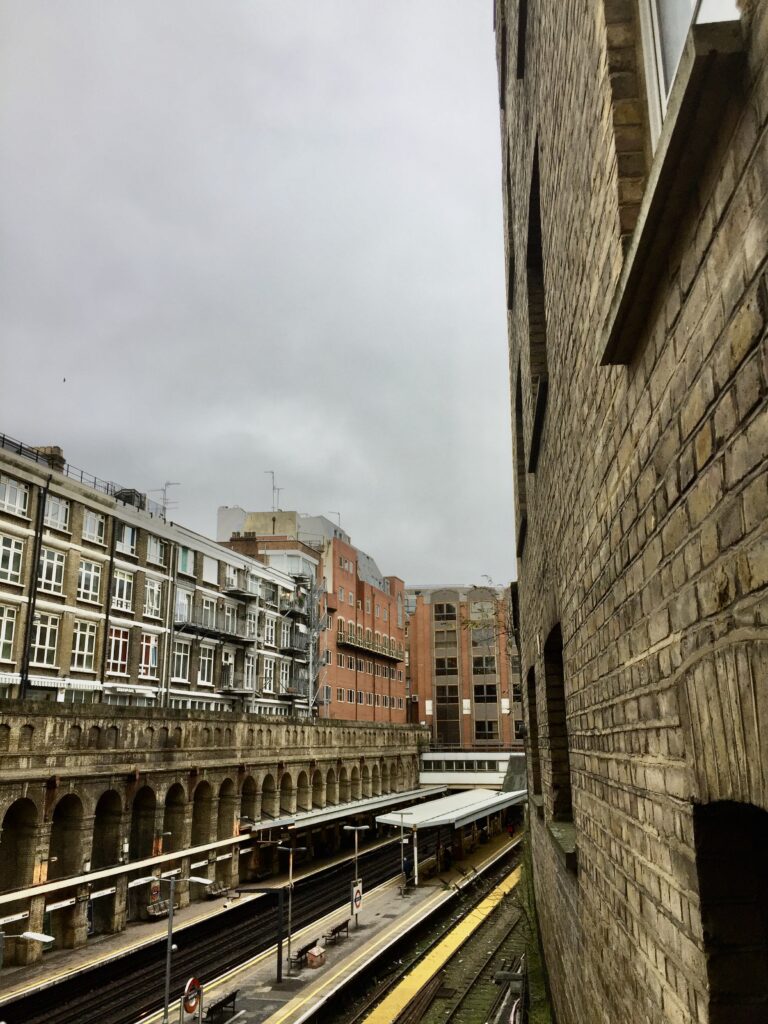
The view from the station platform …
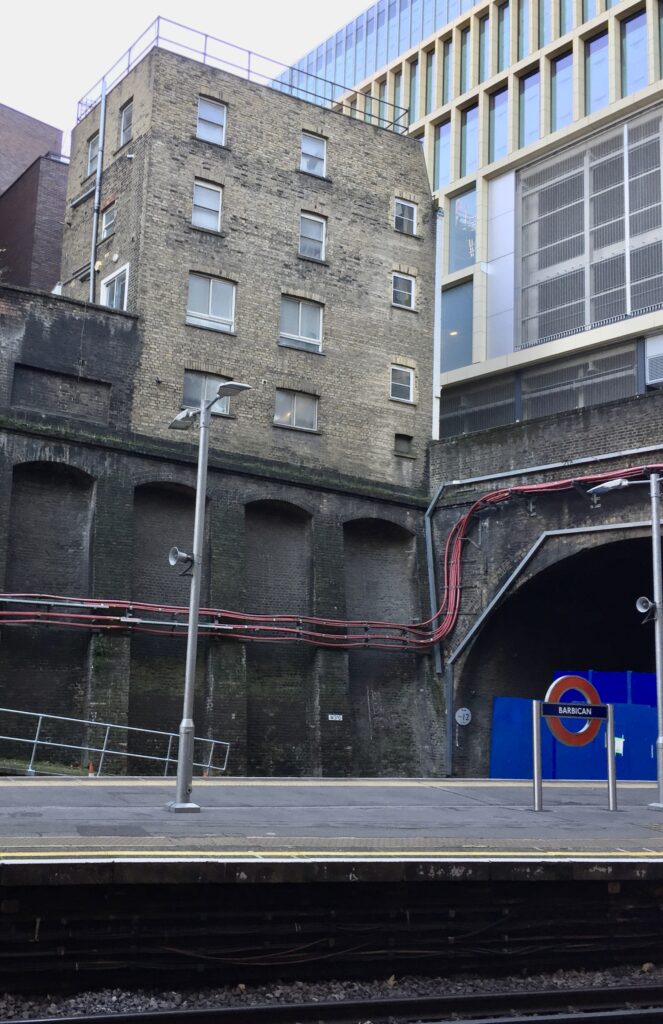
It was scheduled for demolition but I think that would be rather sad. It seems safe at the moment so let’s hope the plans to destroy it have been abandoned. Maybe one day someone might actually live there (would suit an Underground railway enthusiast!) …
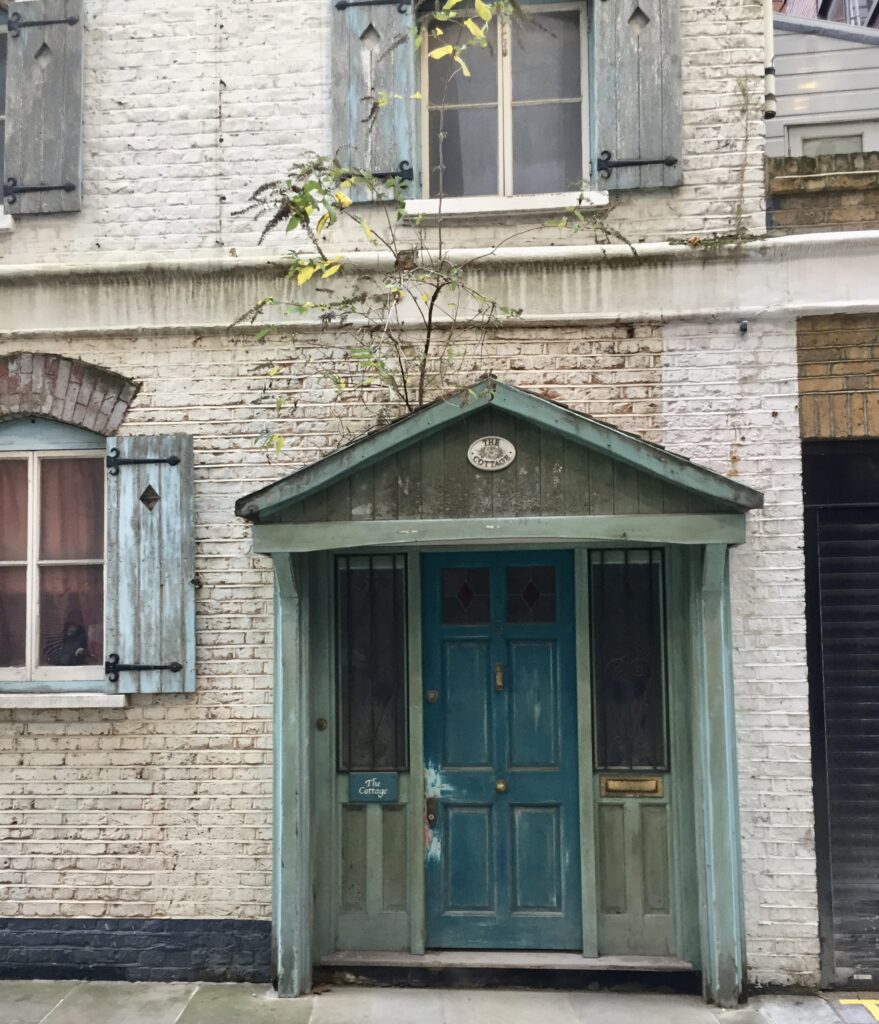
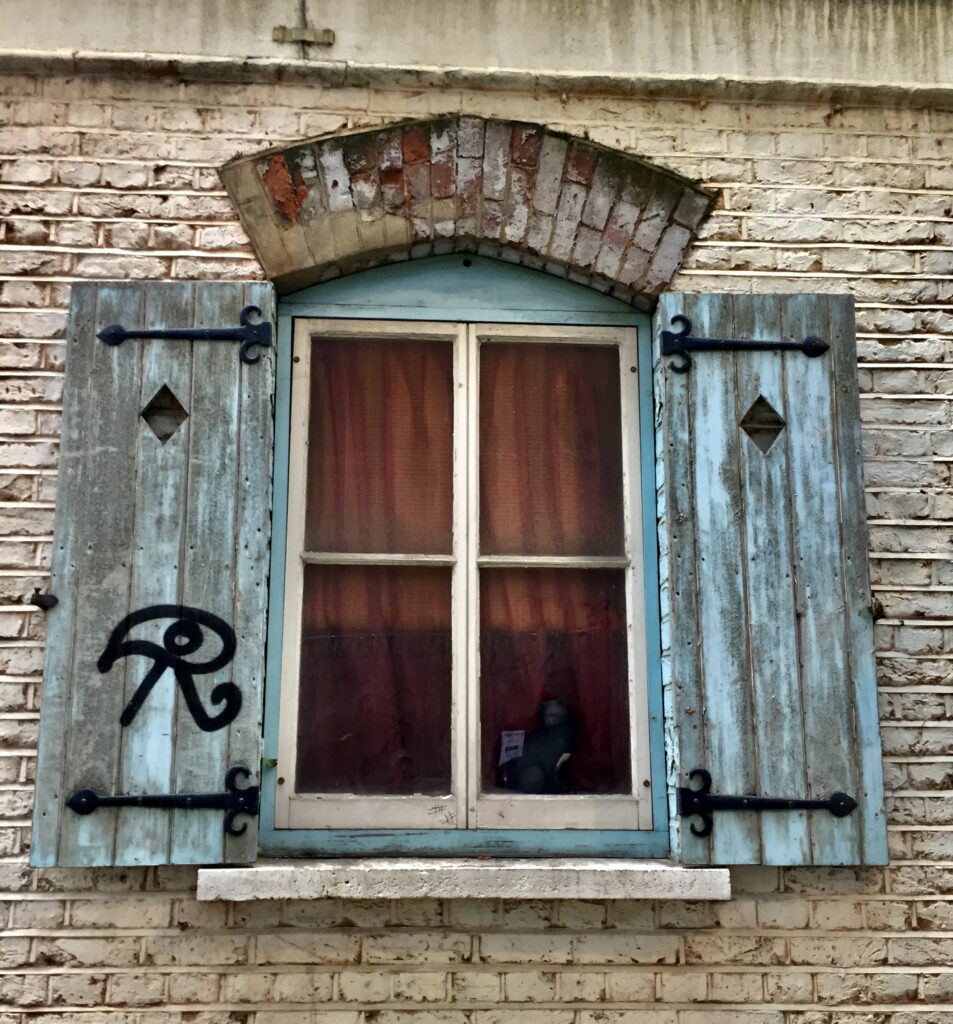
So often entrances don’t look very promising but turn out to reveal something quite fascinating and this is true of Masons Avenue.
Firstly, it doesn’t look much like an ‘avenue’, defined in my dictionary as ‘a broad road in a town or city, typically having trees at regular intervals along its sides’. Really more of an alley, it runs between Basinghall Street in the west and Coleman Street in the east and contains a number of very interesting features …
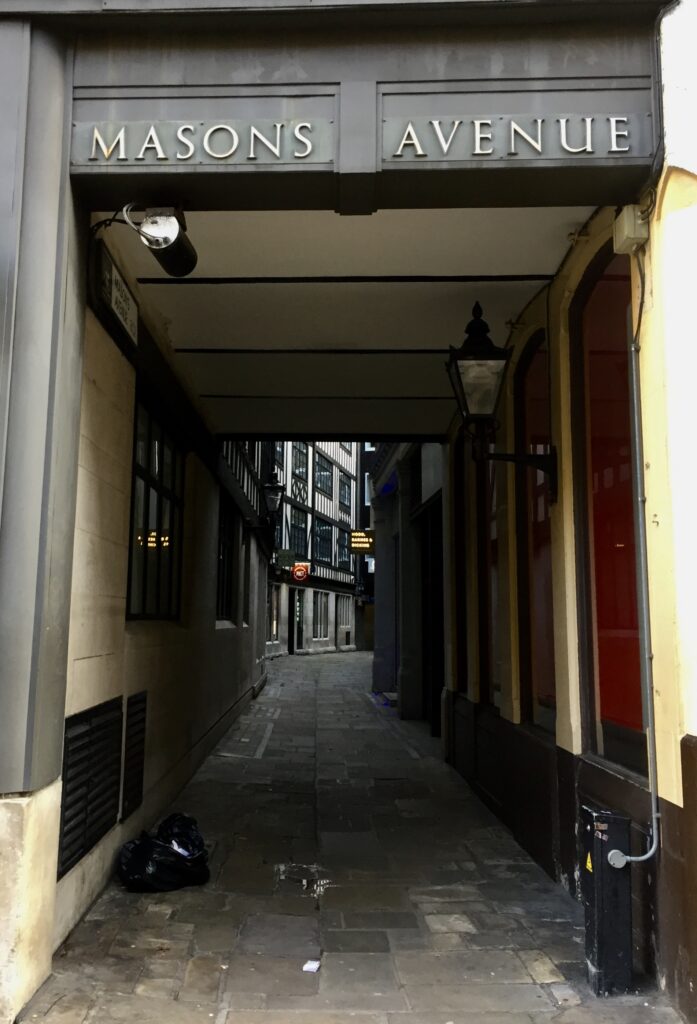
It’s lined with a mock-tudor frontage, which is sadly less than 100 years old — it dates from 1928 …
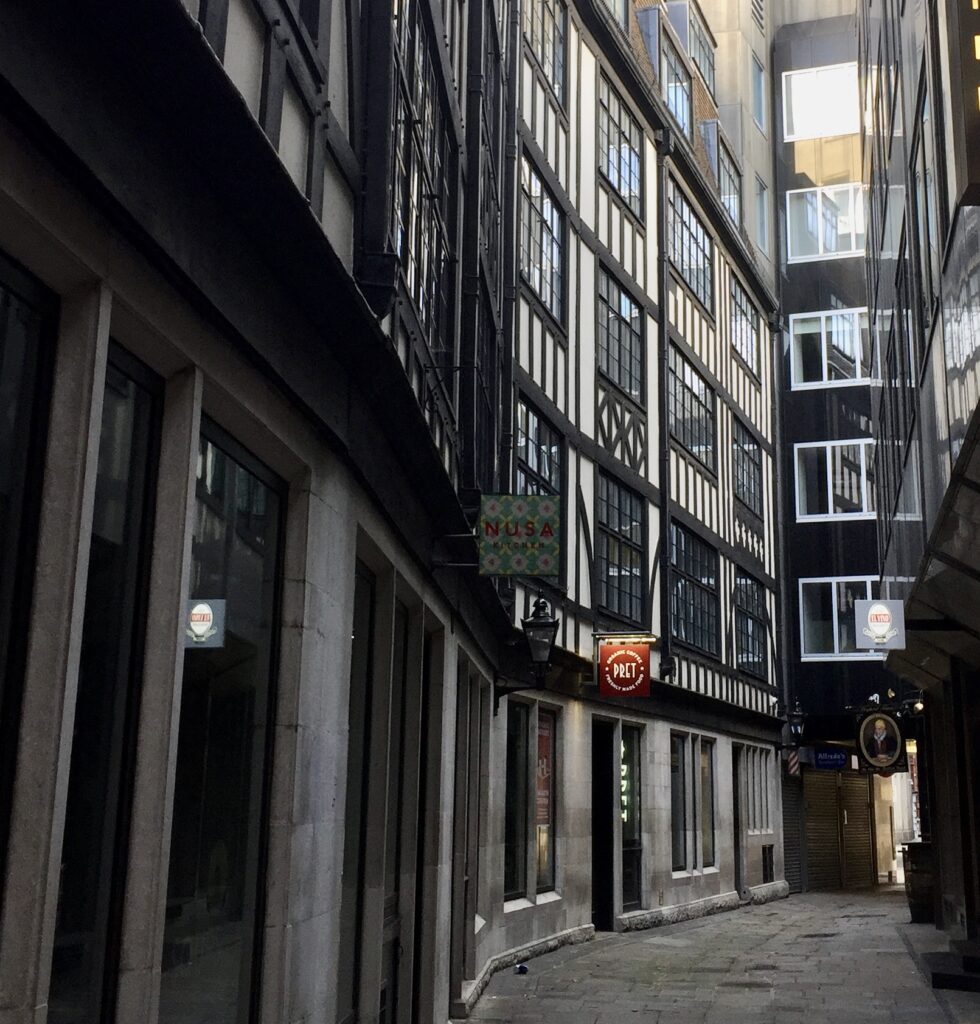
There is also a nice boundary mark for the parish church of St Stephen Coleman Street dated 1860 …
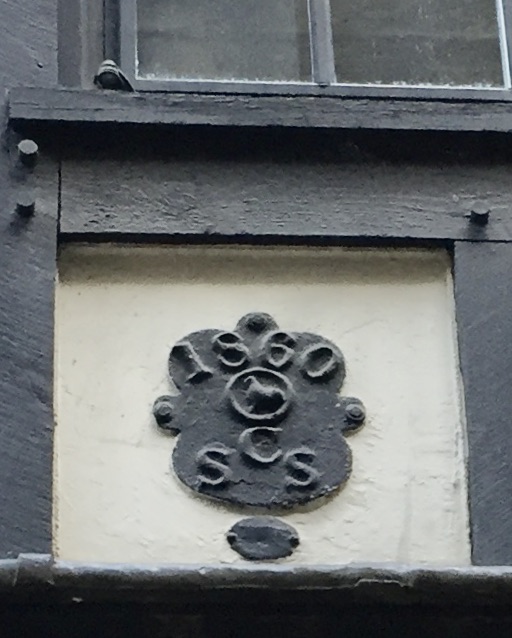
That figure in the middle is a cockerell in a hoop. In 1431, John Sokelyng, who owned a neighbouring brewery called ‘La Cokke on the hoop’, died and left a bequest to St. Stephen’s on the condition that a mass be sung on the anniversary of his death and that of his two wives. The gift was commemorated by a cock in a hoop motif that would decorate the church until the building was destroyed in the Blitz in 1940. Here’s the marker again in its wider setting …
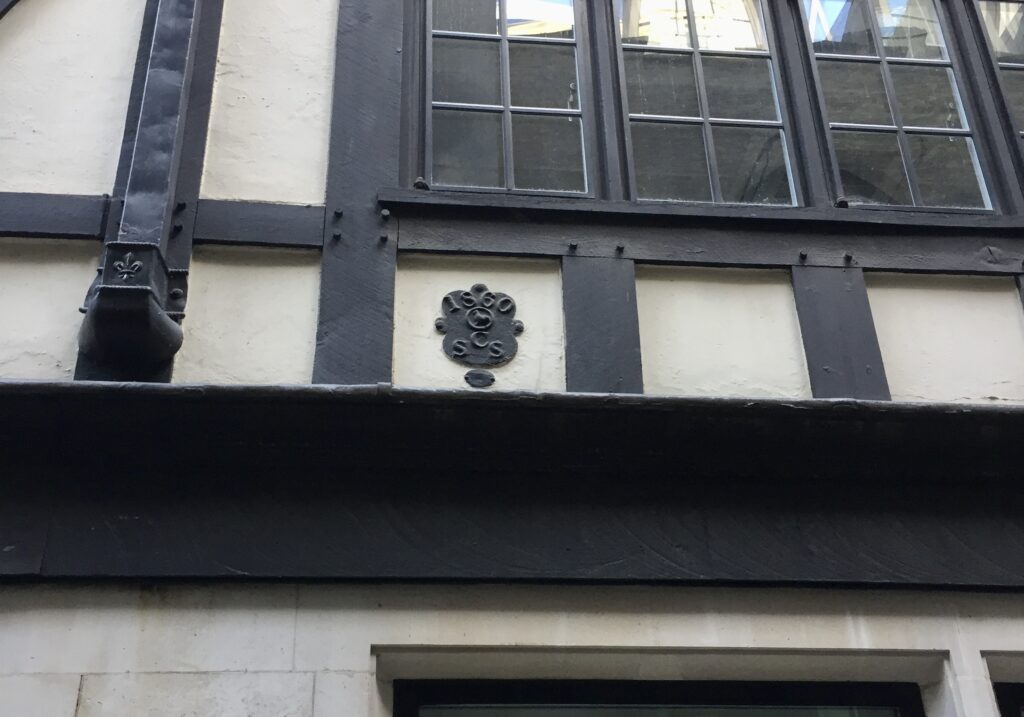
Number 12 boasts an attractive stained glass window (about which I have not been able to find any information) …
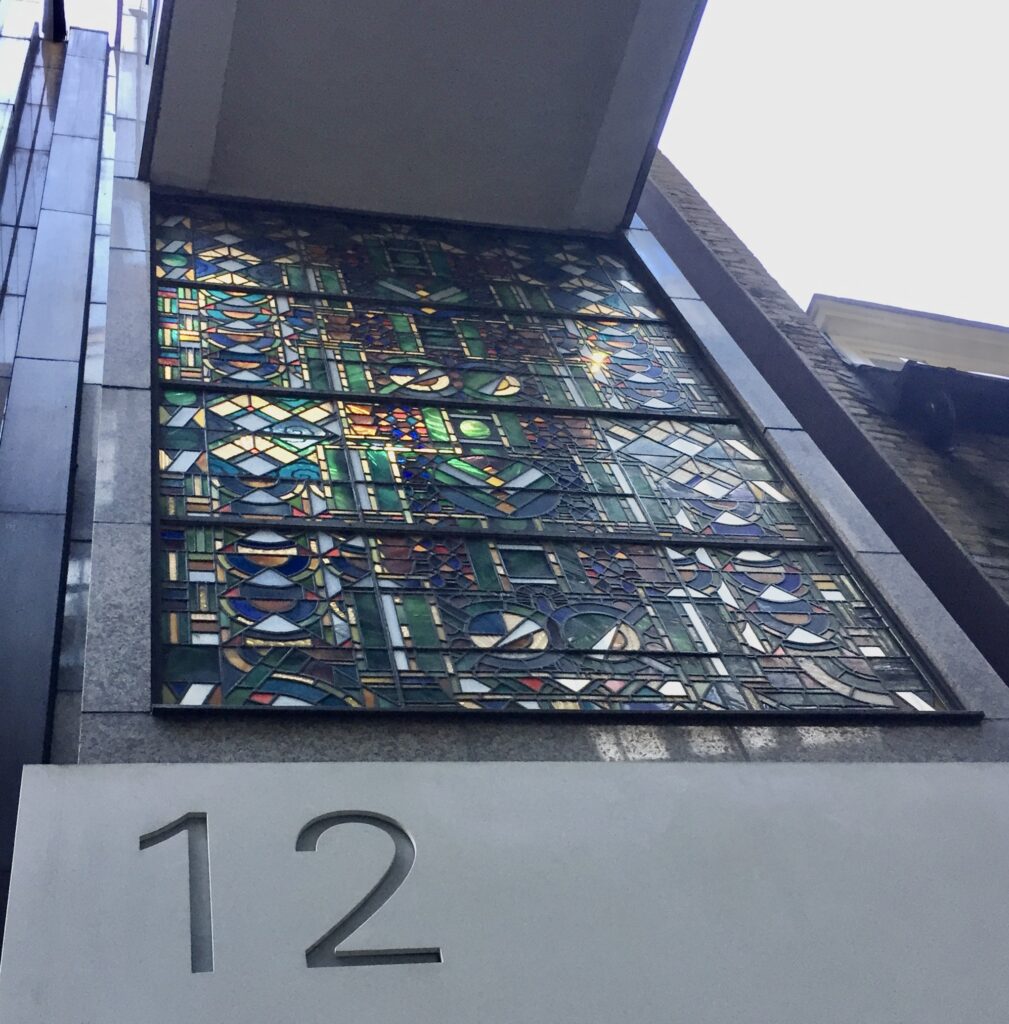
In my view, however, the alley’s crowning glory is this old pub …
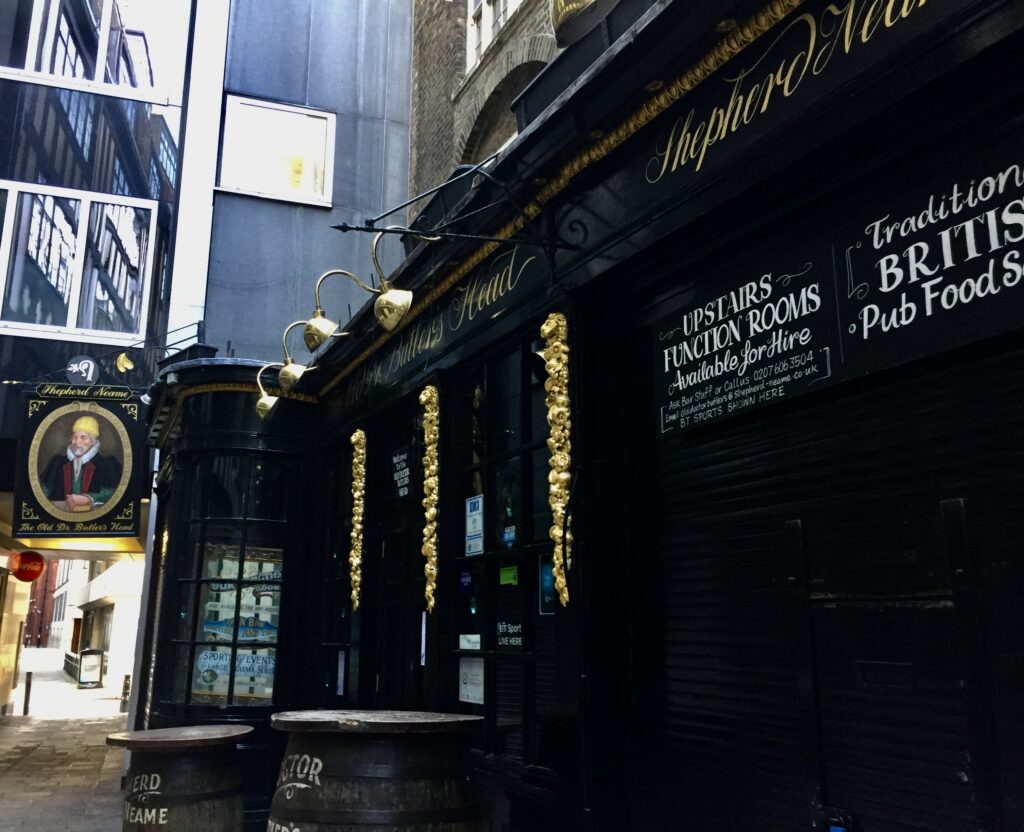
It is very nice to find a pub sign where the portrait does justice to its name, in this case William Butler (1535–1618). Wikipedia states he was ‘an English academic and physician. A Fellow of Clare College, Cambridge, he gained a reputation as an eccentric, a drunkard, and (was once described as) the greatest physician of his time’ …
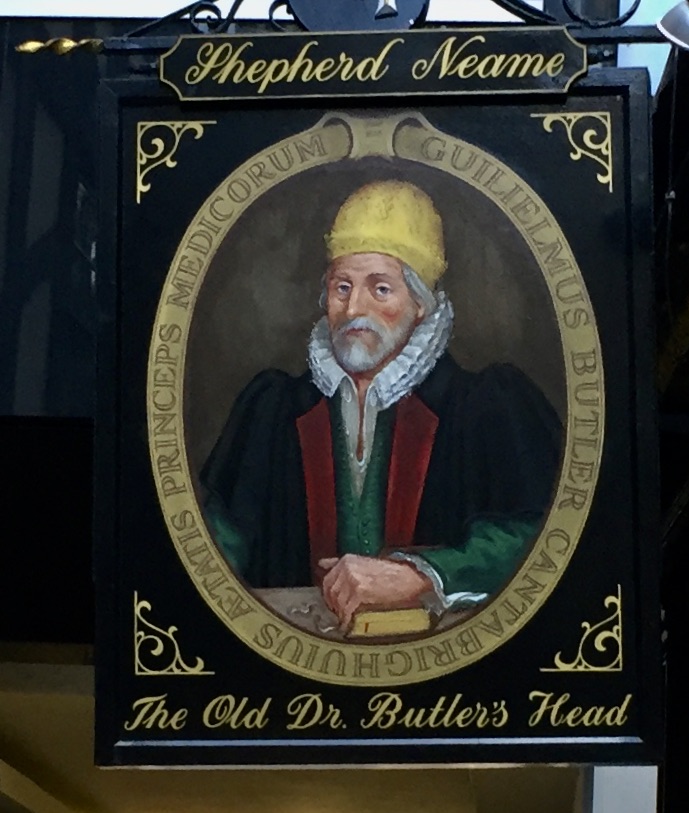
Here is an image held at la Bibliothèque interuniversitaire de santé …
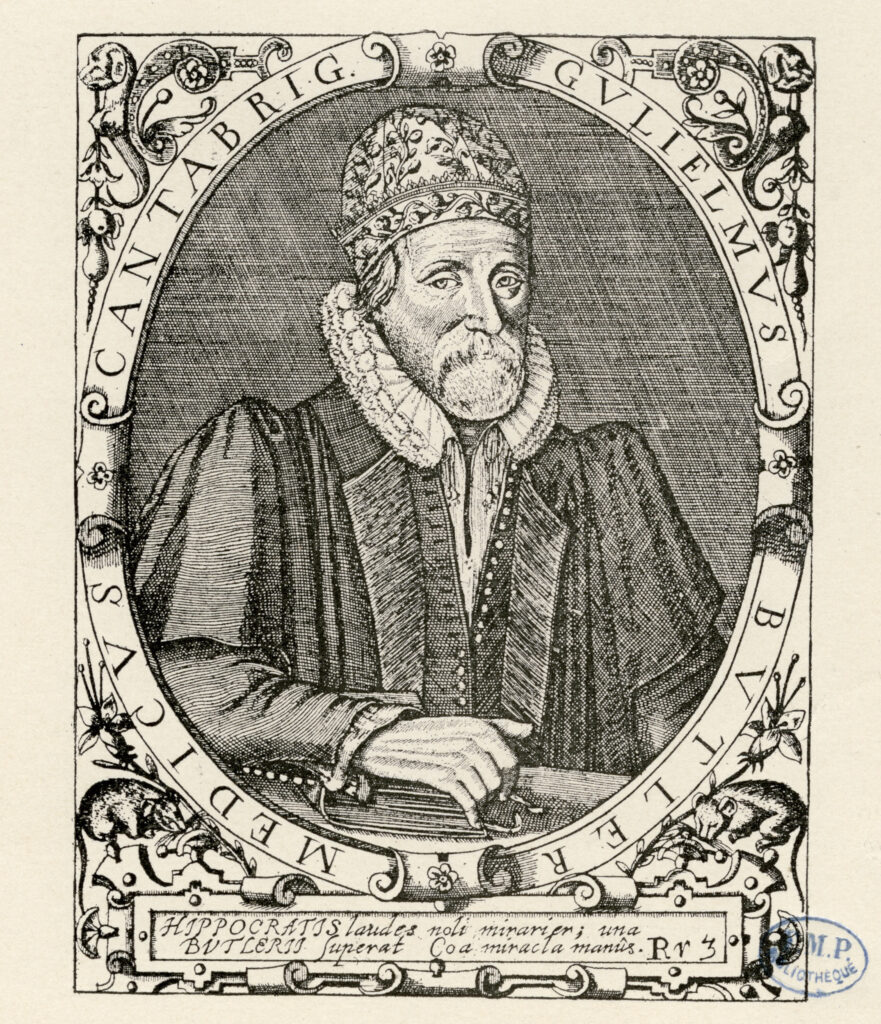
I am always a bit wary of describing medical practitioners from previous centuries as ‘quacks’ since very often they were simply following traditional procedures and in many cases were incredibly well educated.
Some of Dr Butler’s remedies could, however, be described as ‘eccentric’ even for the times. For example, as a cure for epilepsy, he would fire a brace of pistols near his unsuspecting patient, to scare the condition out of them. He is said to have revived a man suffering from an accidental opium overdose by placing him in the chest cavity of a recently-slaughtered cow, and cured another patient of a fever by having him thrown off a balcony into the Thames. On a more enlightened note, he opposed the then common practice of blood-letting.
Here’s his portrait, held at Clare College, to which he bequeathed £260 (about £65,000 today) for the purchase of ‘finest gold,’ from which a chalice and a paten were made…
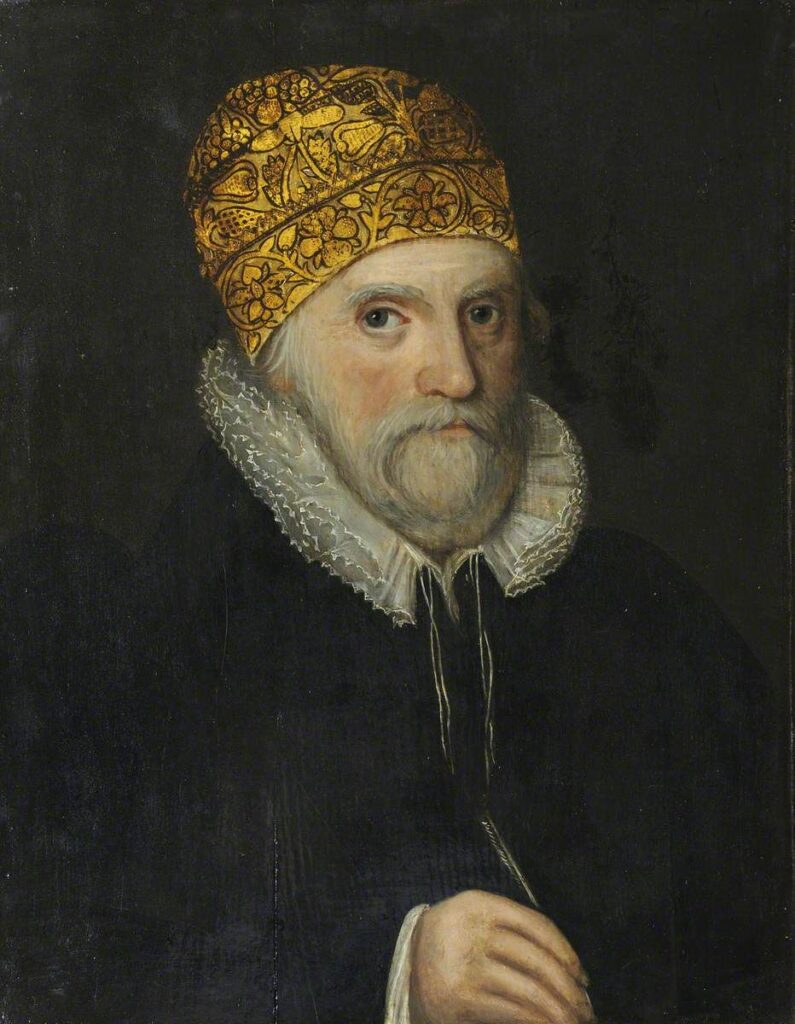
His biggest claim to fame (apart from being court physician to King James I) is his invention of a medicinal drink known as Dr Butler’s purging ale. Eighteenth-century recipes for the drink listed the ingredients as betony (a bitter grassland plant), sage, agrimony (a wayside plant popular in herbal medicine), scurvy-grass (a seaside plant high in Vitamin C, also used to make scurvy-grass ale), Roman wormwood (less potent than “regular” wormwood but still bitter), elecampane (a dandelion-like bitter plant that continues to be used in herbal cough mixtures) and horseradish, which were to be mixed and put in a bag which should be hung in casks of new ale while they underwent fermentation.
Whether this cured anything or not is unknown but it’s quite likely some degree of purging took place after drinking it! In any case, Doctor Butler’s ale became so successful that a number of pubs were named after him of which the Masons Avenue hostelry is the last remaining. Sadly, Purging Ale is no longer available on tap.
His archive is available to view at his old college and you can read more about it here. Look out for this document where he uses an extra thick nib to describe someone as a ‘Brasen faced lyer‘ …

The pub has some nice external decoration but I couldn’t visit the interior due to Covid-related closure …
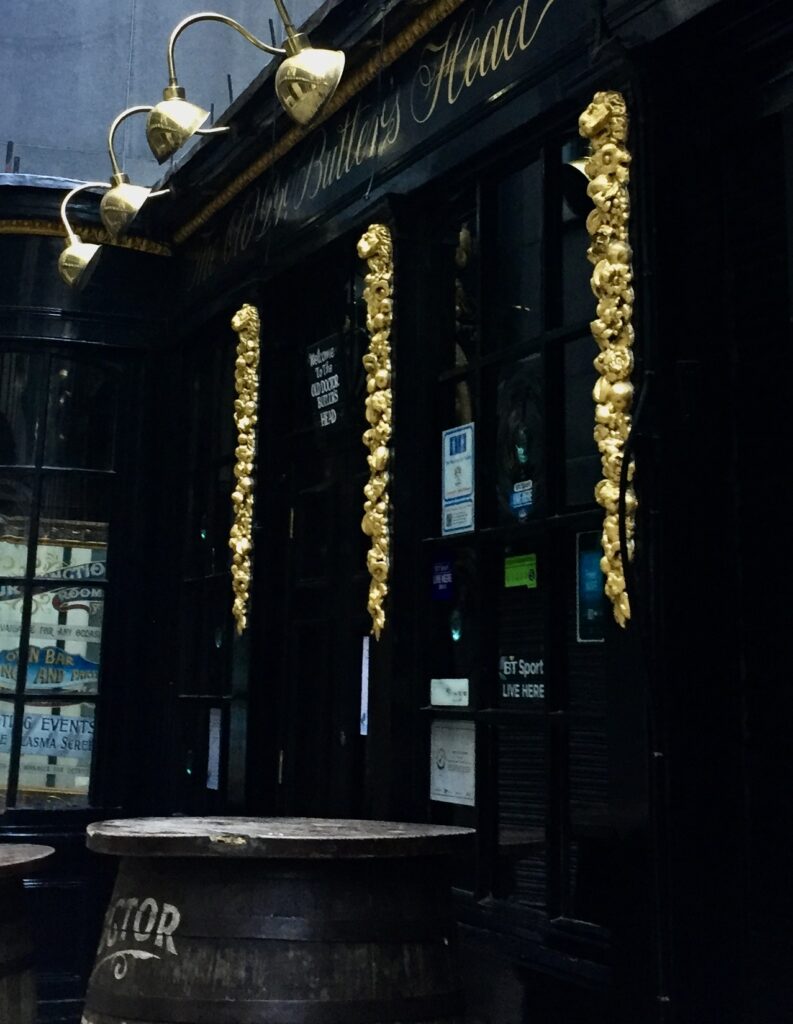
Whilst in pedantic mode I couldn’t help but notice that the name of the alley in the City nameplate carries an apostrophe whereas the name in the pediment over the entrance does not …
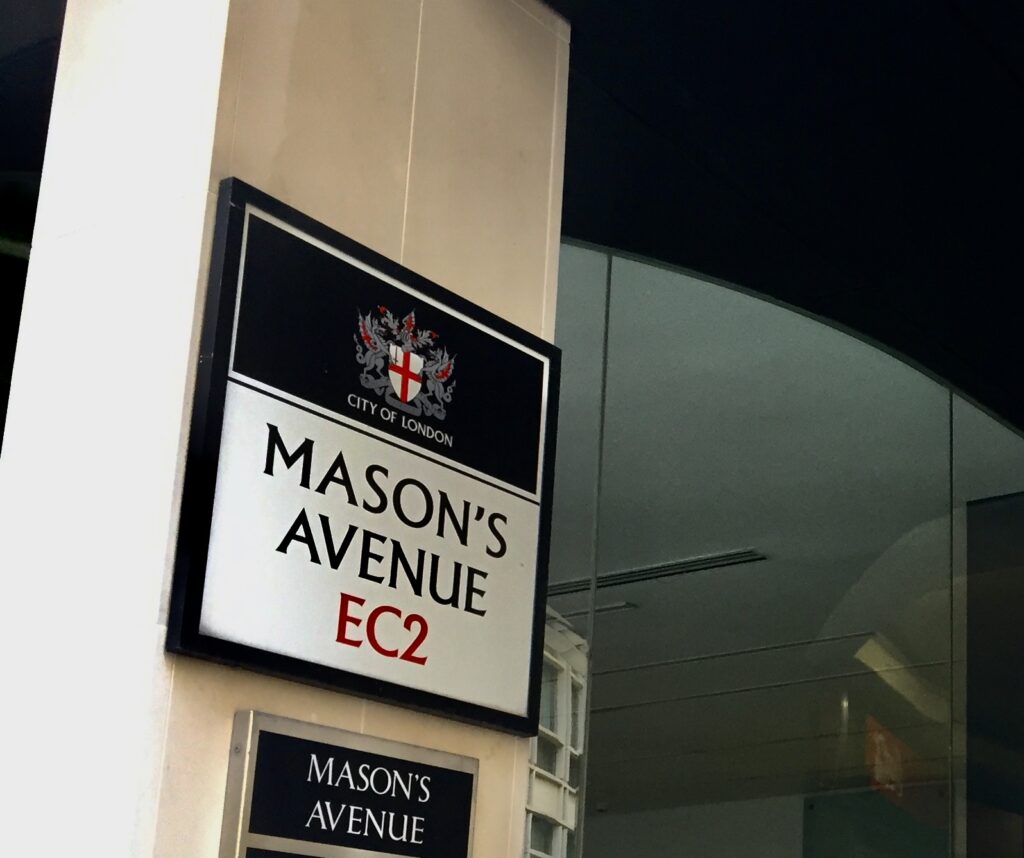
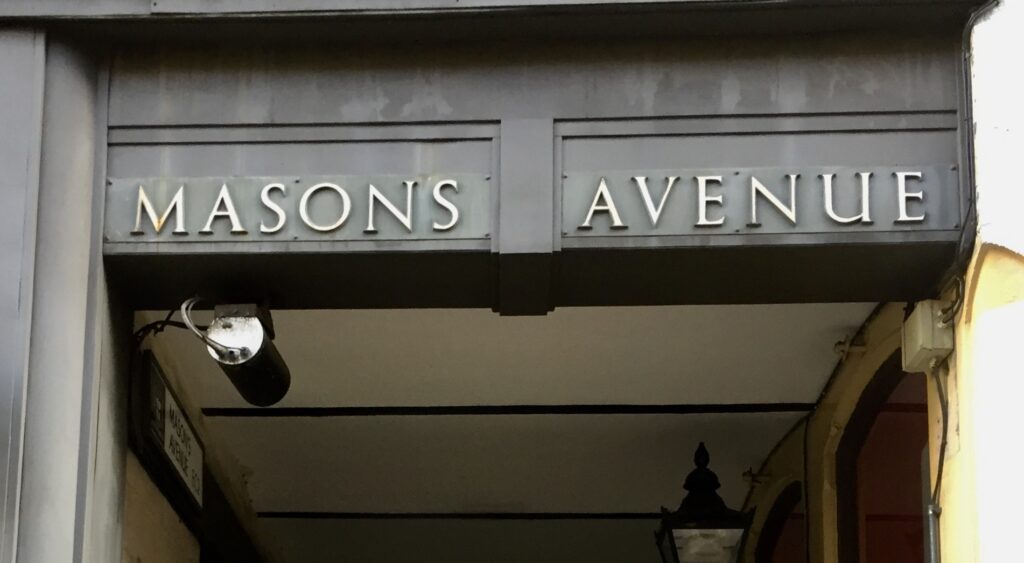
And finally, a piece of tree. You’ll find it on the Barbican Highwalk if you access it from Barbican Underground Station …
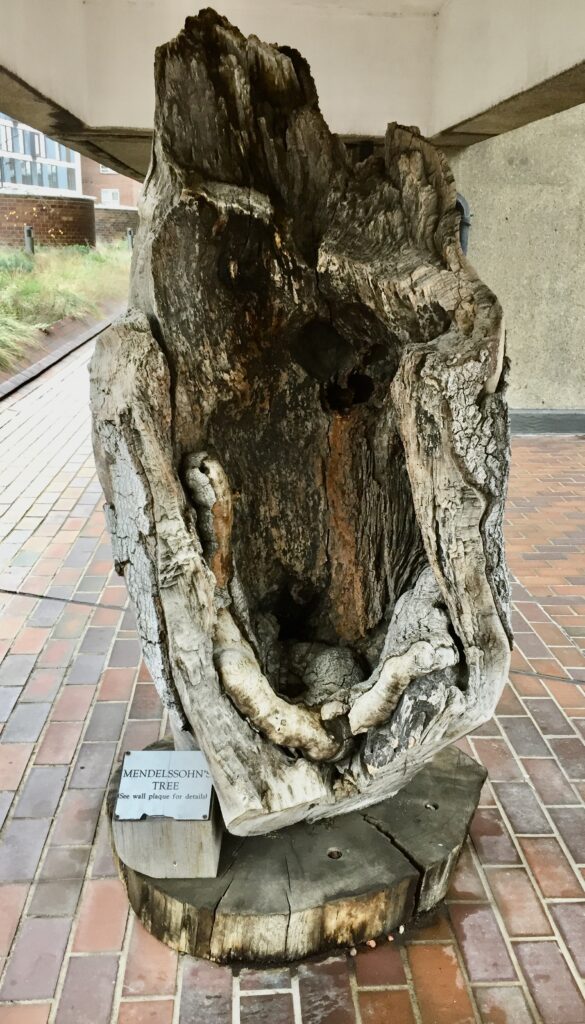
The plaque explains all …
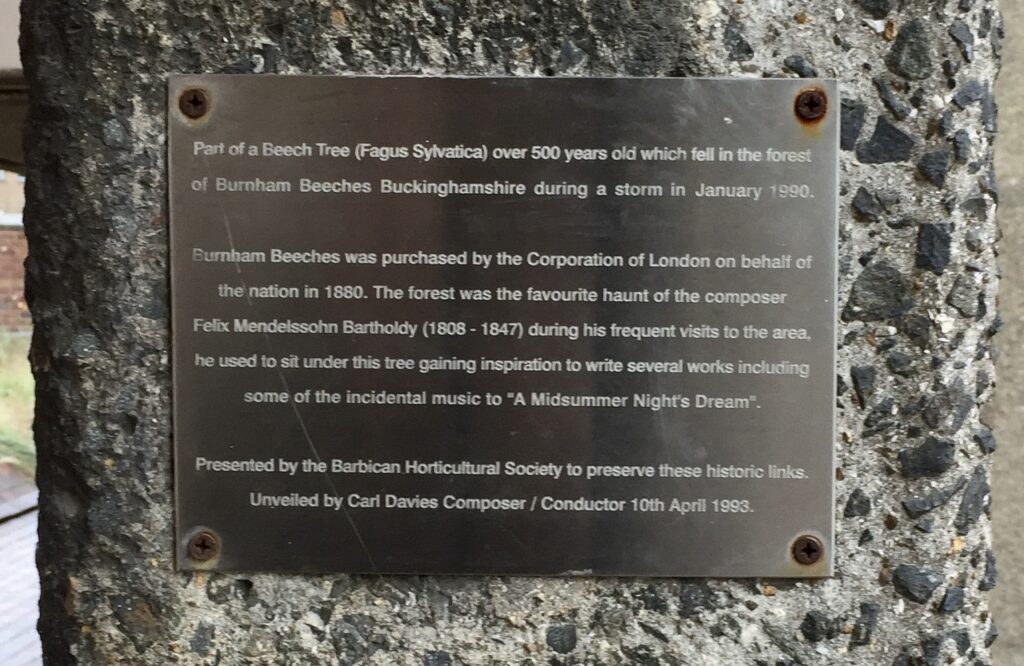
Perhaps I’ll sit there when looking for inspiration for next week’s blog.
If you would like to follow me on Instagram here is the link …
